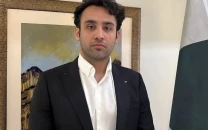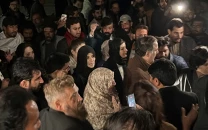The theory of modern war
Newer determinants of international engagement for war, peace, trade are generating their own addendums to rule books.

The writer is a defence analyst who retired as an air vice-marshal in the Pakistan Air Force
The UN Charter outlaws war and grants nations only the right of self-defence. The trouble with the Charter is the relative calm of the graveyard in which it was charted after World War II. The A-Bomb, the weapon to end all wars, had already wrought pervasive and widespread death; peace had been won, and was now to reign eternal. It didn’t. Instead, now more own the deadly weapon, some as much as integrating those as an element of war strategy — engendering the “you attack us, we will nuke you”, syndrome. The world sits perpetually at the edge of a cliff.
There are other parables. The non-state actor has diluted the conventional formulation of an interstate war that the LOAC envisaged and for which the rules were formulated. Hence the new term, fourth-generation war that places a nation(s) in an armed conflict against a group constituting non-state actors alone. The contemporary classification that typifies such a group is pillared around al Qaeda and its various affiliates that coalesces more around a “sentiment” than the neat boundaries that define nation-states. This has forced doctrinal revisions in the theory of war the world over. This has meant retooling and rapidly changing methods of war, challenging moribund strictures. Drones remain the prime exponents of the kind of war that states now resort to. The first to come under stress in such a conduct of war is the notion of sovereignty — a concept that itself needs separate requalification.
Another is the notion of victory. Conventional war doctrines envisaged outright victory; the adage was always simple: “nations do not go to war, if they are not going to win it”. Perhaps, in the interstate scenario, it must continue to be the ruling maxim; but in a fourth generation war, there never is finite victory or loss; except when a non-state group is pushed into fighting a conventional war, as was the case in Sri Lanka. The modern war between a state and a non-state adversary permits a “relative victory” or a “relative loss”, and is used to garner space for the more critical plank, the political manoeuvre. This has been the missing link in Pakistan’s own undertaking against the TTP and is now the preferred means of the PML-N and the PTI to seek an end to the war.
War doctrines are most buffeted by technology, and quite frequently, too. Innovation introduces newer possibilities that change the way a warrior thinks. Drones have done exactly that. Their impact is, however, far deeper and challenges the basic construct of the UN Charter and the LOAC. The Charter envisioned a civil process to war, and a more deliberate and intellectual approach to conflict resolution; while the LOAC enshrined notions of proportionality, morality and chivalry in an armed conflict. Mankind over years, though, has trumped the intended civility by celebrating undiluted success and annihilation through stealth, deception and surprise. Has technology rendered the Charter and the LOAC obsolete and irrelevant? To avoid an expansive finality, there are parts that have not kept pace and are irrelevant.
This brings into focus the modern tools of war, such as the drones. Drones are brilliant in how they meld surveillance, targeting and precision engagement into one — a dream weapon combining three essential functions, all working in parallel, making decision-making almost instantaneous. And that is where complications arise because of the instant nature of the engagement. President Obama identified “imminence” of a threat; “insufficiency” of the capacity to apprehend; and “near certainty” of no collateral damage, which would drive the decision process to execute an engagement. That loosely translates into one more layer above the operator in decision-making, seeking improved fidelity while still retaining the carte blanche nature of instant engagement, albeit now with a procedural and a legal cover. But, where the operator is the CIA, as in the Af-Pak region, accountability withers in the face of exigencies. This accentuates the challenge to the conventional notions of war and armed conflict. Yet, such excursions beyond the convention would be unthinkable without technology enabling tools and application methodologies.
Notions such as “imminence” validate concepts such as pre-emption; the nature of the threat which builds itself around a “sentiment” threatens the Westphalian order of the nation-state; inciting responses, such as through drones, that place the concept of sovereignty almost into turmoil. Add to it the modern notion of trading sovereignty for mutual benefit and the entire edifice around which nations clamour to safeguard sovereignty seems archaic. Not only the principles of international engagement but the laws governing conflict have slid past fast into irrelevance. These need a major overhaul to align with contemporary needs. The principle of “overwhelming force” trumps proportionality, stealth, surprise and deception negate chivalry, and ends justify means to do away with pretensions of morality.
Drones are not the only tools that are challenging ancient conventions; other contraptions such as the “robotic mule” or the “robot-soldier” are the newer forms without any sense of chivalry, proportion or morality. When these get operationalised, the law books will need to be revised. Cyberwar is another hostile engagement between states not covered yet by the UN Charter or the LOAC.
To trump conventionality completely, the newer determinants of international engagement for war, peace, trade or interdependence are generating their own addendums to the rule books that remain hopelessly out of place and mired in the past. When success validates relevance, it writes its own rule books.
Published in The Express Tribune, June 13th, 2013.
Like Opinion & Editorial on Facebook, follow @ETOpEd on Twitter to receive all updates on all our daily pieces.

















COMMENTS
Comments are moderated and generally will be posted if they are on-topic and not abusive.
For more information, please see our Comments FAQ